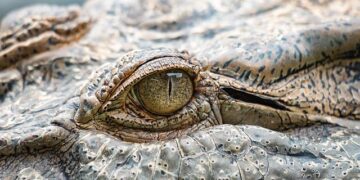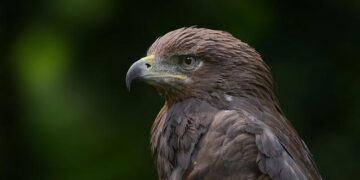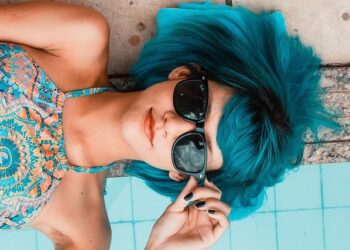ByJulia Winterflood
Published July 23, 2023
• 10 min read
As the sun sinks lazily into the horizon and day turns to night on Phillip Island, a hush of anticipation settles across the group gathered at Summerland Beach. Our eyes strain in the gloaming, scanning the swaying wheatgrass of the foreshore and the darkening waves beyond, gently spilling their foam onto the sands. Typically, dusk heralds the end of a day but, here, at the water’s edge, it’s time for the main event: a nightly wildlife spectacle known as the Penguin Parade. Any moment now, our guests of honour will arrive.
“Of the 18 penguin species around the world, Little Penguins are the smallest,” says our group’s appointed ranger and guide, punctuating the warm evening air with facts. He’s part of Phillip Island Nature Parks, a self-funded organisation that protects the rich biodiversity of this wild island, connected to the southern state of Victoria by a half-mile sea bridge. “They’re mainly found along the coastlines of southern Australia and New Zealand, but, with a whopping 40,000 breeding penguins, we have the largest colony in the world.”
The diminutive seabirds — still taking their time to show up — may be the big draw in these parts, but they’re by no means the only show in town. Since I drove onto the island, I’d been struck by the raw drama of its topography: the way its cragged coastline offers up yawning golden coves and broken-teeth sea stacks, giving way to dense bushland and undulating hills in the interior. Around 12,000 people call Phillip Island home but, as a traveller, you’d hardly know it: it’s the sheer number of native species, carefully nurtured here, that take centre stage as you explore — from koalas and kangaroos to wallabies, wombats, dingoes and possums.
“Before coming to land, Little Penguins gather offshore in groups called ‘rafts’,” our guide continues, addressing those of us who’ve amassed on the Penguins Plus platform, the highest of three ticketed vantage points in the custom-built viewing boardwalk. “They wait for dusk to hide from predators such as pacific gulls and sea eagles; you’re about to watch them waddle across the shore in groups, following familiar tracks back to their beachside burrows.”
I settle into my seat and continue to fix my gaze on the inky waves, hoping to spot the first ‘raft’ surface from a busy day fishing. The entire area has been carefully developed to protect these small seabirds and allow visitors safe, unobtrusive access to their habitat. And although around 150 avian enthusiasts are in attendance this evening, some clearly regulars sporting blankets and binoculars, the experience feels remarkably intimate. We’re instructed to turn off our phones and cautioned to be quiet.
Suddenly, hushed whispers of, “there, there!” become quieted gasps as hundreds of penguins seemingly appear from every side, all at once. It’s not long before a waddle clamber up the beach directly towards us, scuttling over a grassy knoll; their indigo feathers glistening from the surf and silver bellies luminescent in the low lighting of our boardwalk.
“They spend approximately 80% of their lives in the ocean, only coming to shore to maintain their burrows, breed and raise their young, as well as moult their old feathers,” our guide explains. These feathers, we learn, are blue and white to provide camouflage in the water: flying predators can’t differentiate them from above against the blue of the ocean and marine predators can’t differentiate them from below against the white light of the surface.
I home in on a group moving at a particularly impressive pace as they descend a nearby slope. One is as rotund and erratic as a poorly rolled bowling ball, swaying haphazardly from side to side, knocking into his neighbours, causing them to teeter and sway. Some older ones struggle; others squawk and squabble. The scene is accompanied by a unique soundtrack of high-pitched, broken-whistle trills and cartoonish wheezes. Penguin chatter is a jarring yet conversational noise; I’ve never heard anything quite like it before, and don’t imagine I will again.
Suddenly, the whole huddle pauses in unison. They crane their tiny necks in all directions, beaks pointing skyward. They seem suddenly bewildered with fatigue, and understandably so. Little Penguins only weigh two to three pounds but can dive up to 2,000 times per day to catch the equivalent of their body weight in small fish and krill (their genus, Eudyptula, means ‘good little diver’). And some still have over a mile still to walk home over capeweed-carpeted cliffs.
The evening is woven with exposition designed to deepen visitors’ understanding and appreciation for the birds. We learn the penguins’ dune burrows are made during the winter months and are held together with native grasses and Bower spinach; and that male and females take it in turns to incubate their eggs during breeding season, between August and February, when birdwatching times are regulated to allow for more privacy.
I get a strong sense of the environmental work at play, too. A jumble of wooden nesting boxes peppering the bank, plus a fox eradication program and the replanting of native vegetation, are just some of the efforts taken by the dedicated rangers of Phillip Island Nature Parks to increase the penguins’ numbers, which, until 1985, were on the decline.
Back down on the sand, a few penguins skitter under the boardwalk, fleeing congestion on the main track. But they’re not the only creatures busy at this time of night: an eastern barred bandicoot darts down the hill and heads straight through the thronging intersection, creating a momentary multi-bird pile up. Then, as if given a signal, a brushtail possum bursts forth from the bushes and scampers into the oncoming group at breakneck speed, then over the dunes and on toward the beach.
With so much drama, I’m loathe to leave, but after our 50-minute slot is up, our guide indicates it’s time for us to go. The procession, however, shows little sign of easing. In the distance, another swaying mass of shiny birds are making their way out of the surf.
4 more endemic species to spot in Victoria
1. Wombats
Three hours’ drive southeast of Melbourne lies Wilsons Promontory National Park, which is part of the southernmost tip of mainland Australia and one of the best places to see wombats in the wild. Weighing up to six stone, their compact, muscular body enables them to be deft diggers. If you pitch a tent at the main campground, there’s a good chance you’ll have one (or more) in your vicinity by morning.
2. Koalas
Stretching across coastlines, beaches and the Otway Ranges in the state’s southwest, the Great Otway National Park is home to thriving manna gum woodland, a favoured koala habitat. The park’s repopulation and conservation efforts over the last 40 years have resulted in Australia’s greatest concentration of the iconic marsupial. Inhale the earthy scents of centuries-old beech trees, lush ferns and giant Californian redwoods while exploring waterfalls and walking tracks.
3. Kangaroos
With weightlifter-like arms and legs rippling with fur-covered muscle, male eastern grey kangaroos can reach an intimidating height of 6.5 feet. The alpha’s harem forms part of a larger troop, or ‘mob’, which could comprise over 40 members. Situated at the edge of the Grampians National Park, the laid-back holiday town of Hall’s Gap is a great place to spot them, as they migrate into the central park at dusk. Sunset here is always particularly enchanting; as the temperature cools, watch the sky turn tangerine and lavender and, if you’re lucky, spot a joey peeking out from its mother’s pouch.
4. Platypus
Most Australians will go a lifetime without seeing a platypus in the wild; it’s a rare and wonderful encounter. One of the best chances of spying one is during a guided kayak tour of Lake Elizabeth, an hour’s drive off the Great Ocean Road. The guides at Otway Eco Tours will have you paddling across the silky lake at dawn, under a canopy of ancient ferns and through a cloud of early morning fog. Platypus are extremely difficult to spot; keep your eyes peeled for the tell-tale surface bubbles.
Plan your trip
Catch the Penguin Parade any day at sunset on Phillip Island; numbers and arrival times vary depending on the season. To get to Phillip Island, fly from London Heathrow to Tullamarine Airport, Melbourne. From there, take the Skybus direct to Southern Cross Station where you can take a V/Line bus to Cowes, Phillip Island. For more information, go to visitvictoria.com
To subscribe to National Geographic Traveller (UK) magazine click here. (Available in select countries only).
>>> Read full article>>>
Copyright for syndicated content belongs to the linked Source : National Geographic – https://www.nationalgeographic.com/travel/article/paid-content-penguin-parade-phillip-island-melbourne-australia































